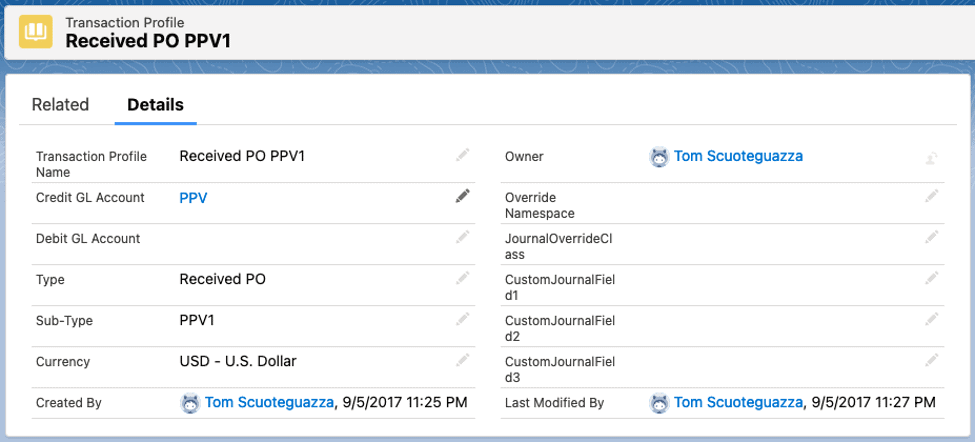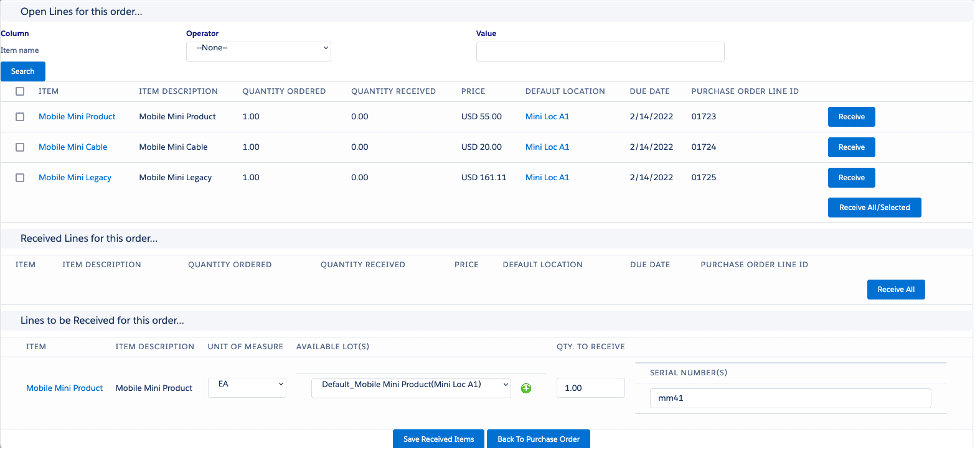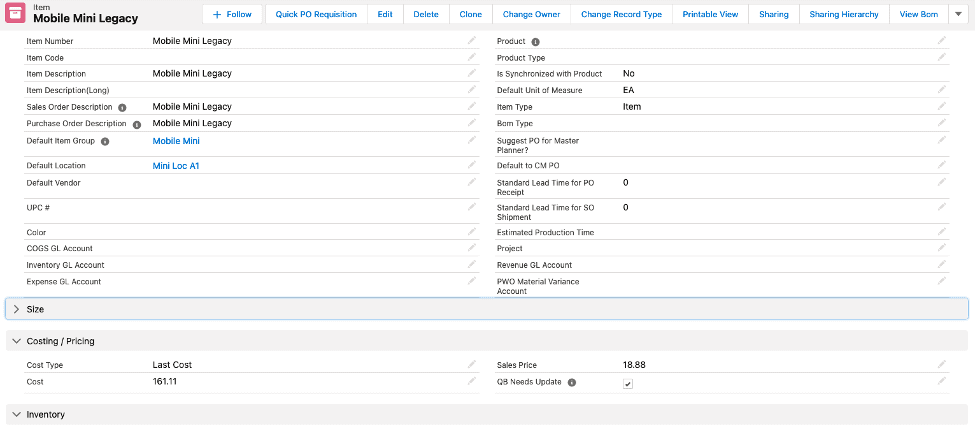Purchase Order – Purchase Journals
Overview
This document will serve as an overview of the functionality available via Purchase Orders and the AFP tool to create a purchase order, purchase order receipt, and purchase journals. It will illustrate receiving an item with cost types of standard, average, and last.
Definition: Whenever a purchase order is received, a journal can be created.
Ascent’s AFP module is required to set up the general ledger accounts and posting processes.
Let’s illustrate the set-up, but assume the general ledger accounts have already been created.
First, set up the Item Group posting profile. Item Groups are ways that we can categorize items with similar characteristics, like posting accounts, common uses (brass screws, wood screws, etc), and costs.
Here, we’ve set up an item group called Mobile Mini (MM). To access it, click on the tab entitled Item Groups:

You need an item group name, an up-to-3 character item group code, and the appropriate general ledger accounts. For our example, we require just the Inventory GL Account, but as you can see, it houses other GL accounts for other purposes.
Next, we need to tell the system what will be our credit for the purchase receipt value. That is known as the Goods Received, Not Invoiced account. To enter that, go to the Transaction Profile tab. You will create the Item Receipt name, with a Type of “Received PO”, a Sub-Type of “Item”, and the Credit GL Account of the goods received, not invoiced. Here, we named ours GRNI. Notice that there also exists a Debit GL Account and we’ve entered Inventory-TP. This would be the default GL account used if you have not entered a general ledger account in the Item Group posting profile.

There’s another place where you can put your GL Account, and that’s at the Item Master level. You might have an item (precious metals?) that you wish to have its own inventory account. You can also have those other accounts on the items master that are referenced on the item group. They are referenced at the bottom of the following screenshot:

Lastly, there needs to be a transaction profile for the Purchase Price Variance. Go to the tab called Transaction Profiles and add this one. Note: this is only used when the cost type is standard and the PO Price is different from the cost on the item master. To read more about this, go to document Purchase Order – Purchase Price Variance.

Process: To illustrate the creation of purchase journals, we will:
- Create a purchase order for three cost type items
- Perform PO receipts for each one
- Review the journal that was created for each type of purchase
Create the Purchase Order:
We’ll create a simple, three line purchase order. The first line will be for an item at standard cost, the second for an item at average cost, and the third for an item at last cost.
The standard cost item:

The average cost item:

The last cost item:

Here’s the purchase order we’ve created:


Note the difference between the Cost field and the Price field. It will become important when creating the journals.
Receive the Purchase Order:
Now, let’s receive the purchase order by clicking Receive PO at the top of the PO screen:

On the next screen, which came up as a result of clicking Receive PO, we clicked the Receive box next to the first PO Line, and are now being asked to either select the available lots or create a NEW lot (by clicking the green circle with the + in the middle of it). We’ll accept the default lot/location as well as entering the serial number:

Let’s accept the lot, Qty to Receive Serial Number and hit Save Received Items, and we will see this response:

Let’s look at the journal that was created. Go back to the purchase order, refresh the screen, and hover over the Journal Entries related list:

If we click on JE-00001106 (the journal entry name), and then click on Related, we’ll see the details:

A DR to Inventory-TP for $55.00, the standard cost, and a CR to GRNI (Goods Received, Not Invoiced) for $-55.00, as expected.
Let’s receive the next line, the one with an average cost type:

After taking the default Available Lot and Quantity to Receive, we hit Save Received items and get this confirmation:

After going back to the purchase order and hitting refresh, we can hover over the Journal Entries field:

We see the new journal entry, JE-00001106. Let’s click on that and then hit the related button:

The journal entry itself looks fine. But if we go back to the item, we’ll see something has happened. Inventory has been updated (it’s not 11 on hand), but the cost field (since it’s an average cost item) has been recalculated – old QOH * old cost ($120.00) plus new qty received * PO price (1 * $20.00) = ($120.00 + $20.00) / 11 = $12.73, which is the new cost:

Finally let’s receive the last line on the purchase order, the one with the cost type equal to last. Click on the Receive PO button and click on Receive for the PO line item Mobile Mini Legacy:

Let’s accept the Available Lot default and the Qty to Receive and hit Save Received Items and we’ll see this confirmation message:

After clicking Back to Purchase Order, we can refresh the screen and look at the Related List Quick Links, where we’ll see Journal Entries (3). Also notice that the status bar has moved to “Complete”:

Hover over the Journal Entries (3) field:

Let’s click on JE-00001107, which corresponds to the last item received, and then select Related:

This is the correct journal entry, a DR to Inventory for the PO Price of $161.11 for the value received and a CR to GRNI for $-161.11.
But more importantly, let’s go back to the item and see what effect this receipt had on the cost:

We see that inventory was updated (QOH = 11), but the cost has been updated to the last cost received, $161.11, which was on the purchase order line.
